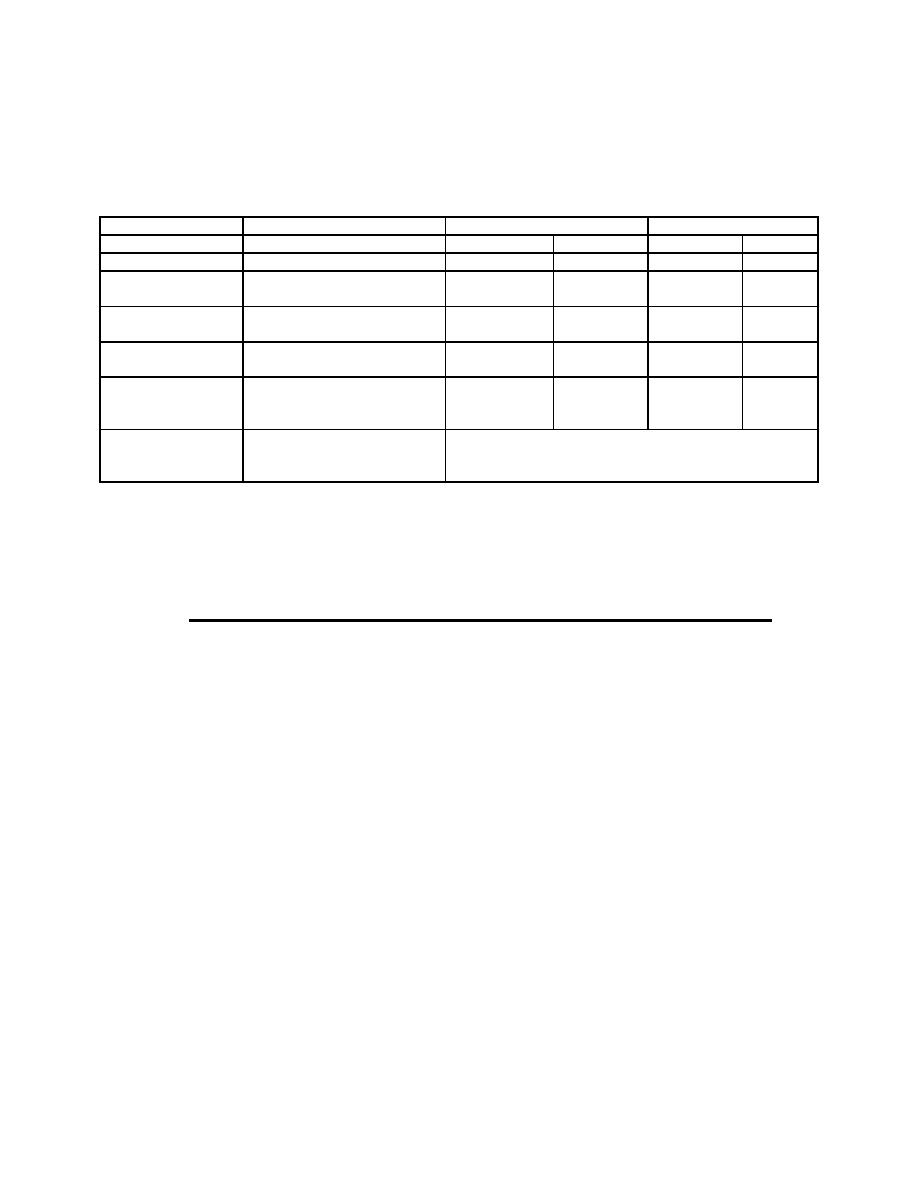
UFC 3-300-10N
May 2005
Including Change 2, August 2006
B-2.2.4
Concrete for floors: The following criteria should apply unless structural or
durability requirement necessitate higher strengths. Slump may be increased to 203mm
(8 inches) when a high-range water-reducing admixture is used:
Usual Class Traffic
Typical Uses
28 day strength
Max. Slump
MPa
psi
mm
in
1. Light foot
Residential or tile covered
20
3000
100
4
2. Foot
Offices, churches, schools,
25
3500
100
4
hospitals, residences
3. Light foot &
Drives, garage floors and
25
3500
100
4
pneumatic wheels
sidewalks for residence
4. Foot and
Light industrial, commercial
30
4000
75
3
pneumatic wheels
5. Foot and
Single-course industrial,
35
4500
75
3
wheels, abrasive
integral topping
wear
6. Foot and steel-
Two-course, heavy
See ACI 302.1R
tire vehicles,
industrial topping
severe abrasion
B-2.2.5
The following maximum water-cement (W/C) guidelines should apply to all
structural concrete not exposed to severe conditions:
Without
With
Compressive Strength (28 days)
Air-entrainment
Air-entrainment
20.7 Mpa (3000 psi)
0.58
0.50
24.1 Mpa (3500 psi)
0.54
0.48
27.6 Mpa (4000 psi)
0.50
0.45
B-2.7
Cold-Formed Steel Framing.
The design of cold-formed framing for all architectural uses (interior partitions,
coordinated by the Project Architect and the Structural Engineer.
B-2.9
Wood Framing.
The moisture content of lumber should not exceed 19 percent for dimensional lumber,
or 25 percent for timbers, at the time of delivery to the site. For other lumber products,
the moisture content must be in accordance with the standard under which the product
is produced.
23


 Previous Page
Previous Page
